From the Chicago Reader (July 1, 1993). — J.R.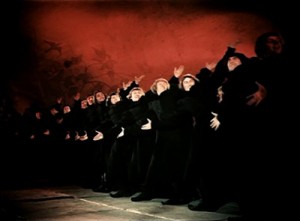
The second feature in Sergei Eisenstein’s controversial, unfinished trilogy, also known as The Boyar’s Plot, with a Prokofiev score and a histrionic, campy (albeit compositionally very controlled) performance in the title role by Nikolai Cherkassov (1946). The ceremonial high style of the proceedings has been interpreted by critics as everything from the ultimate denial of a cinema based on montage (under Stalinist pressure) to one of the most courageous acts of defiance in film history (Joan Neuberger and Yuri Tsivian) to the greatest Flash Gordon serial ever made (my own estimation). The second part climaxes in a dazzling, drunken dance sequence that features Eisenstein’s only foray into color. Thematically fascinating both as submerged autobiography and as a daring portrait of Stalin’s paranoia, quite apart from its interest as the historical pageant it professes to be, this is one of the most distinctive great films in the history of cinema — freakishly mannerist, yet so vivid in its obsessions and expressionist angularity that it virtually invents its own genre. (JR)

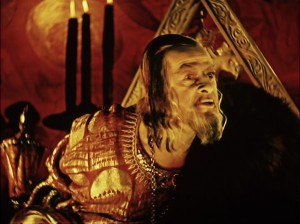 Read more
Read more
From Film Comment (November-December 2010). — J.R.
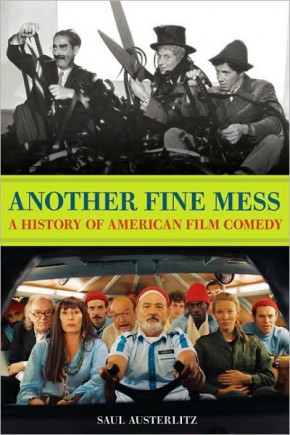
Another Fine Mess: A History of American Film Comedy
By Saul Austerlitz Chicago Review Press, $24.95
As an audacious and ambitious canonizing gesture, this highly readable critical volume comes closer to Sarris’s The American Cinema than it does to Thomson’s Biographical Dictionary of Film, if only because the author can always be counted on to have seen the work he writes about. Omissions are of course inevitable, and even though I don’t know Austerlitz’s age, I suspect that most of the lacunae I notice in the creative figures he selects for his 30 chapters and 105 shorter entries — such as Fred Allen, Danny Kaye, Martha Raye, and Red Skelton — are generationally determined for both of us; older and younger readers will come up with other missing names. But the amount that he actually covers is impressive.
Sometimes the organizational strategies get weird: the chapter on Dustin Hoffman, delving perceptively into the Jewish aspects of his persona, also manages to be a chapter about Warren Beatty. Some of the research is sloppy: Orson Welles couldn’t have “credited” The Power and the Glory as an “inspiration” if he maintained that he’d never seen it. Read more
From the Chicago Reader (April 1, 1988). The stills are copyrighted by the Estate of Andrew Noren. — J.R.
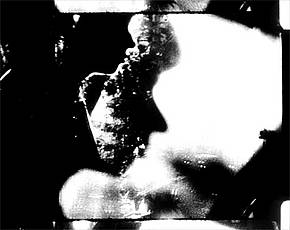
Andrew Noren’s first film since Charmed Particles offers 59 minutes of ecstatic delight in relation to the everyday: it’s all black and white and silent, and mainly nonnarrative, but so sensually rich and rhythmically alive that watching it is an almost constant pleasure. Noren calls himself a light thief and shadow bandit, and this pulsing compendium of home-movie moments is charged with musical energy. It differs from Charmed Particles, the previous episode in his The Adventures of the Exquisite Corpse, mainly in seeming to have more thematic ambitions and in verging somewhat closer to narrative — none of which is allowed to detract much from the overall beauty and intensity of the filmmaking. (JR)
 Read more
Read more
From Cineaste, Vol. XXXI, No. 4, September 2006. — J.R.

Spoilers ahead: The title heroine (Silvia Pinal) of
Luis Buñuel’s masterpiece, a Spanish novice
about to take her final vows, is ordered by her
mother superior to visit her rich uncle (Fernando
Rey), Don Jaime, who’s been supporting her over
the years but whom she barely knows. A
necrophiliac foot fetishist, he’s preoccupied with
how closely his beautiful niece resembles his
late wife, who died tragically on their wedding night,
and somehow manages to persuade Viridiana
to put on her wedding dress, which he’s
faithfully preserved. With the help of his servant
Ramona (Margarita Lozano), he then drugs her with the
intention of raping her, but deeply mortified by
his behavior, ultimately holds back and hangs
himself instead, using the skipping-rope he
previously gave to Ramona’s little girl.
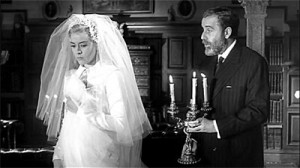
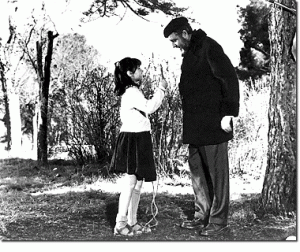
If this opening strongly evokes the horror of a
Gothic novel — a form of literature Luis









